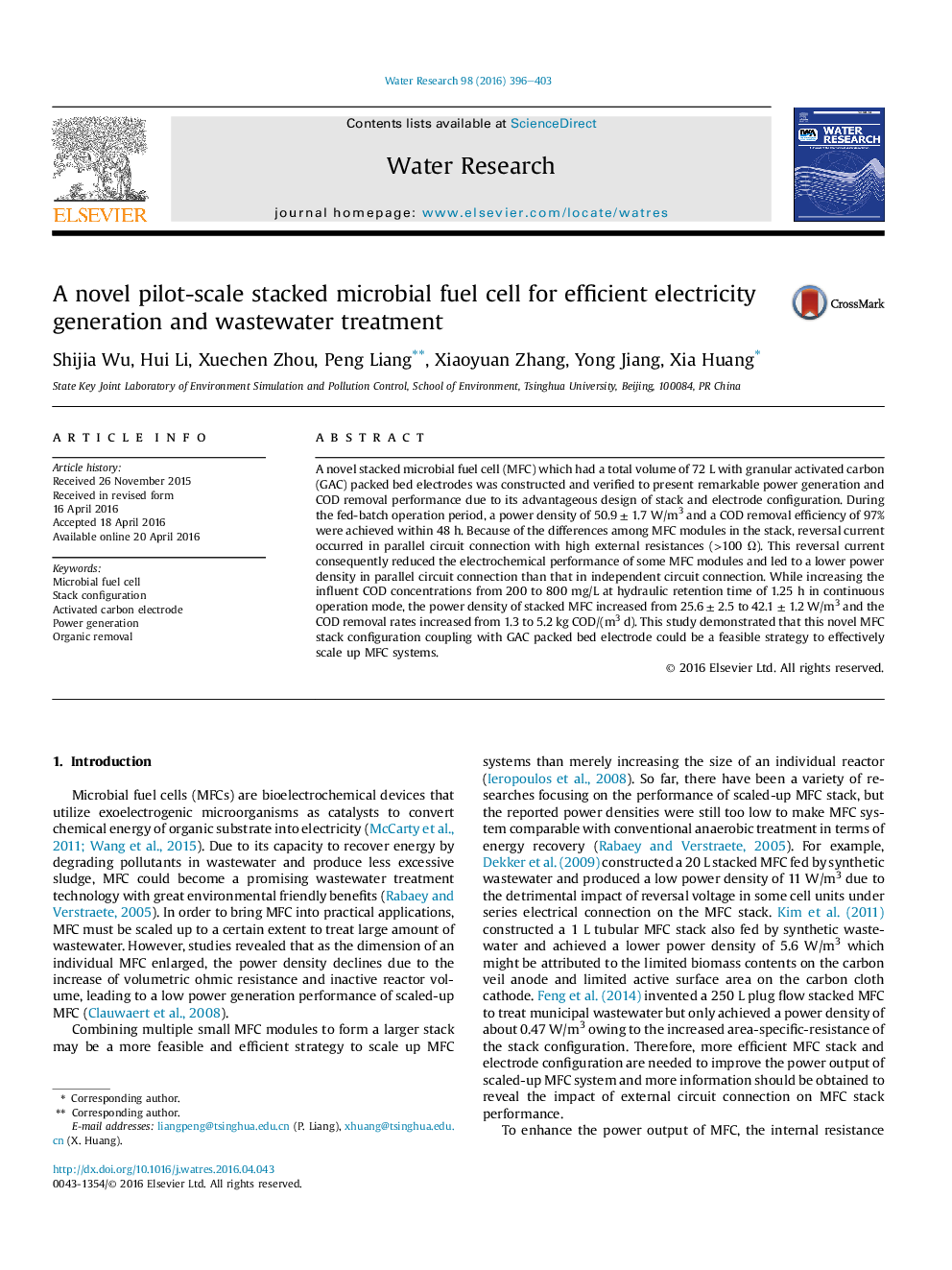| Article ID | Journal | Published Year | Pages | File Type |
|---|---|---|---|---|
| 4481005 | Water Research | 2016 | 8 Pages |
•A novel pilot stacked MFC was constructed with GAC packed bed electrode.•A maximum power density of 50.9 W/m3 was obtained in parallel circuit connection.•Reversal current was discovered at high voltage output in parallel circuit connection.•High COD removal rate and power output were achieved even at low COD concentrations.•Stack design resulted in different performance contribution among anode chambers.
A novel stacked microbial fuel cell (MFC) which had a total volume of 72 L with granular activated carbon (GAC) packed bed electrodes was constructed and verified to present remarkable power generation and COD removal performance due to its advantageous design of stack and electrode configuration. During the fed-batch operation period, a power density of 50.9 ± 1.7 W/m3 and a COD removal efficiency of 97% were achieved within 48 h. Because of the differences among MFC modules in the stack, reversal current occurred in parallel circuit connection with high external resistances (>100 Ω). This reversal current consequently reduced the electrochemical performance of some MFC modules and led to a lower power density in parallel circuit connection than that in independent circuit connection. While increasing the influent COD concentrations from 200 to 800 mg/L at hydraulic retention time of 1.25 h in continuous operation mode, the power density of stacked MFC increased from 25.6 ± 2.5 to 42.1 ± 1.2 W/m3 and the COD removal rates increased from 1.3 to 5.2 kg COD/(m3 d). This study demonstrated that this novel MFC stack configuration coupling with GAC packed bed electrode could be a feasible strategy to effectively scale up MFC systems.
Graphical abstractFigure optionsDownload full-size imageDownload high-quality image (313 K)Download as PowerPoint slide
